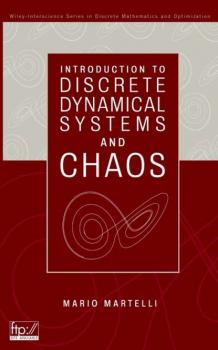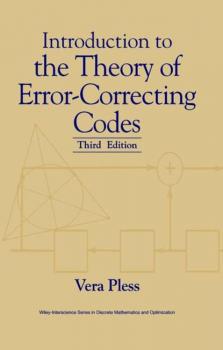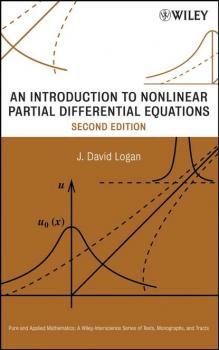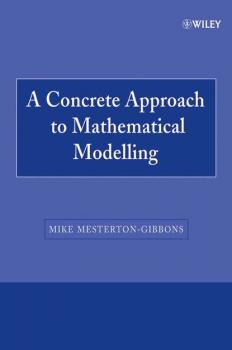Группа авторов
Список книг автора Группа авторовPartial Differential Equations and the Finite Element Method
A systematic introduction to partial differential equations and modern finite element methods for their efficient numerical solution Partial Differential Equations and the Finite Element Method provides a much-needed, clear, and systematic introduction to modern theory of partial differential equations (PDEs) and finite element methods (FEM). Both nodal and hierachic concepts of the FEM are examined. Reflecting the growing complexity and multiscale nature of current engineering and scientific problems, the author emphasizes higher-order finite element methods such as the spectral or hp-FEM. A solid introduction to the theory of PDEs and FEM contained in Chapters 1-4 serves as the core and foundation of the publication. Chapter 5 is devoted to modern higher-order methods for the numerical solution of ordinary differential equations (ODEs) that arise in the semidiscretization of time-dependent PDEs by the Method of Lines (MOL). Chapter 6 discusses fourth-order PDEs rooted in the bending of elastic beams and plates and approximates their solution by means of higher-order Hermite and Argyris elements. Finally, Chapter 7 introduces the reader to various PDEs governing computational electromagnetics and describes their finite element approximation, including modern higher-order edge elements for Maxwell's equations. The understanding of many theoretical and practical aspects of both PDEs and FEM requires a solid knowledge of linear algebra and elementary functional analysis, such as functions and linear operators in the Lebesgue, Hilbert, and Sobolev spaces. These topics are discussed with the help of many illustrative examples in Appendix A, which is provided as a service for those readers who need to gain the necessary background or require a refresher tutorial. Appendix B presents several finite element computations rooted in practical engineering problems and demonstrates the benefits of using higher-order FEM. Numerous finite element algorithms are written out in detail alongside implementation discussions. Exercises, including many that involve programming the FEM, are designed to assist the reader in solving typical problems in engineering and science. Specifically designed as a coursebook, this student-tested publication is geared to upper-level undergraduates and graduate students in all disciplines of computational engineeringand science. It is also a practical problem-solving reference for researchers, engineers, and physicists.
Logic-Based Methods for Optimization
A pioneering look at the fundamental role of logic in optimization and constraint satisfaction While recent efforts to combine optimization and constraint satisfaction have received considerable attention, little has been said about using logic in optimization as the key to unifying the two fields. Logic-Based Methods for Optimization develops for the first time a comprehensive conceptual framework for integrating optimization and constraint satisfaction, then goes a step further and shows how extending logical inference to optimization allows for more powerful as well as flexible modeling and solution techniques. Designed to be easily accessible to industry professionals and academics in both operations research and artificial intelligence, the book provides a wealth of examples as well as elegant techniques and modeling frameworks ready for implementation. Timely, original, and thought-provoking, Logic-Based Methods for Optimization: * Demonstrates the advantages of combining the techniques in problem solving * Offers tutorials in constraint satisfaction/constraint programming and logical inference * Clearly explains such concepts as relaxation, cutting planes, nonserial dynamic programming, and Bender's decomposition * Reviews the necessary technologies for software developers seeking to combine the two techniques * Features extensive references to important computational studies * And much more
Introduction to Discrete Dynamical Systems and Chaos
A timely, accessible introduction to the mathematics of chaos. The past three decades have seen dramatic developments in the theory of dynamical systems, particularly regarding the exploration of chaotic behavior. Complex patterns of even simple processes arising in biology, chemistry, physics, engineering, economics, and a host of other disciplines have been investigated, explained, and utilized. Introduction to Discrete Dynamical Systems and Chaos makes these exciting and important ideas accessible to students and scientists by assuming, as a background, only the standard undergraduate training in calculus and linear algebra. Chaos is introduced at the outset and is then incorporated as an integral part of the theory of discrete dynamical systems in one or more dimensions. Both phase space and parameter space analysis are developed with ample exercises, more than 100 figures, and important practical examples such as the dynamics of atmospheric changes and neural networks. An appendix provides readers with clear guidelines on how to use Mathematica to explore discrete dynamical systems numerically. Selected programs can also be downloaded from a Wiley ftp site (address in preface). Another appendix lists possible projects that can be assigned for classroom investigation. Based on the author's 1993 book, but boasting at least 60% new, revised, and updated material, the present Introduction to Discrete Dynamical Systems and Chaos is a unique and extremely useful resource for all scientists interested in this active and intensely studied field. An Instructor's Manual presenting detailed solutions to all the problems in the book is available upon request from the Wiley editorial department.
Introduction to the Theory of Error-Correcting Codes
A complete introduction to the many mathematical tools used to solve practical problems in coding. Mathematicians have been fascinated with the theory of error-correcting codes since the publication of Shannon's classic papers fifty years ago. With the proliferation of communications systems, computers, and digital audio devices that employ error-correcting codes, the theory has taken on practical importance in the solution of coding problems. This solution process requires the use of a wide variety of mathematical tools and an understanding of how to find mathematical techniques to solve applied problems. Introduction to the Theory of Error-Correcting Codes, Third Edition demonstrates this process and prepares students to cope with coding problems. Like its predecessor, which was awarded a three-star rating by the Mathematical Association of America, this updated and expanded edition gives readers a firm grasp of the timeless fundamentals of coding as well as the latest theoretical advances. This new edition features: * A greater emphasis on nonlinear binary codes * An exciting new discussion on the relationship between codes and combinatorial games * Updated and expanded sections on the Vashamov-Gilbert bound, van Lint-Wilson bound, BCH codes, and Reed-Muller codes * Expanded and updated problem sets. Introduction to the Theory of Error-Correcting Codes, Third Edition is the ideal textbook for senior-undergraduate and first-year graduate courses on error-correcting codes in mathematics, computer science, and electrical engineering.
Partial Differential Equations of Applied Mathematics
This new edition features the latest tools for modeling, characterizing, and solving partial differential equations The Third Edition of this classic text offers a comprehensive guide to modeling, characterizing, and solving partial differential equations (PDEs). The author provides all the theory and tools necessary to solve problems via exact, approximate, and numerical methods. The Third Edition retains all the hallmarks of its previous editions, including an emphasis on practical applications, clear writing style and logical organization, and extensive use of real-world examples. Among the new and revised material, the book features: * A new section at the end of each original chapter, exhibiting the use of specially constructed Maple procedures that solve PDEs via many of the methods presented in the chapters. The results can be evaluated numerically or displayed graphically. * Two new chapters that present finite difference and finite element methods for the solution of PDEs. Newly constructed Maple procedures are provided and used to carry out each of these methods. All the numerical results can be displayed graphically. * A related FTP site that includes all the Maple code used in the text. * New exercises in each chapter, and answers to many of the exercises are provided via the FTP site. A supplementary Instructor's Solutions Manual is available. The book begins with a demonstration of how the three basic types of equations-parabolic, hyperbolic, and elliptic-can be derived from random walk models. It then covers an exceptionally broad range of topics, including questions of stability, analysis of singularities, transform methods, Green's functions, and perturbation and asymptotic treatments. Approximation methods for simplifying complicated problems and solutions are described, and linear and nonlinear problems not easily solved by standard methods are examined in depth. Examples from the fields of engineering and physical sciences are used liberally throughout the text to help illustrate how theory and techniques are applied to actual problems. With its extensive use of examples and exercises, this text is recommended for advanced undergraduates and graduate students in engineering, science, and applied mathematics, as well as professionals in any of these fields. It is possible to use the text, as in the past, without use of the new Maple material.
An Introduction to Nonlinear Partial Differential Equations
Praise for the First Edition: «This book is well conceived and well written. The author has succeeded in producing a text on nonlinear PDEs that is not only quite readable but also accessible to students from diverse backgrounds.» —SIAM Review A practical introduction to nonlinear PDEs and their real-world applications Now in a Second Edition, this popular book on nonlinear partial differential equations (PDEs) contains expanded coverage on the central topics of applied mathematics in an elementary, highly readable format and is accessible to students and researchers in the field of pure and applied mathematics. This book provides a new focus on the increasing use of mathematical applications in the life sciences, while also addressing key topics such as linear PDEs, first-order nonlinear PDEs, classical and weak solutions, shocks, hyperbolic systems, nonlinear diffusion, and elliptic equations. Unlike comparable books that typically only use formal proofs and theory to demonstrate results, An Introduction to Nonlinear Partial Differential Equations, Second Edition takes a more practical approach to nonlinear PDEs by emphasizing how the results are used, why they are important, and how they are applied to real problems. The intertwining relationship between mathematics and physical phenomena is discovered using detailed examples of applications across various areas such as biology, combustion, traffic flow, heat transfer, fluid mechanics, quantum mechanics, and the chemical reactor theory. New features of the Second Edition also include: Additional intermediate-level exercises that facilitate the development of advanced problem-solving skills New applications in the biological sciences, including age-structure, pattern formation, and the propagation of diseases An expanded bibliography that facilitates further investigation into specialized topics With individual, self-contained chapters and a broad scope of coverage that offers instructors the flexibility to design courses to meet specific objectives, An Introduction to Nonlinear Partial Differential Equations, Second Edition is an ideal text for applied mathematics courses at the upper-undergraduate and graduate levels. It also serves as a valuable resource for researchers and professionals in the fields of mathematics, biology, engineering, and physics who would like to further their knowledge of PDEs.
Modern Real and Complex Analysis
Modern Real and Complex Analysis Thorough, well-written, and encyclopedic in its coverage, this text offers a lucid presentation of all the topics essential to graduate study in analysis. While maintaining the strictest standards of rigor, Professor Gelbaum's approach is designed to appeal to intuition whenever possible. Modern Real and Complex Analysis provides up-to-date treatment of such subjects as the Daniell integration, differentiation, functional analysis and Banach algebras, conformal mapping and Bergman's kernels, defective functions, Riemann surfaces and uniformization, and the role of convexity in analysis. The text supplies an abundance of exercises and illustrative examples to reinforce learning, and extensive notes and remarks to help clarify important points.
Fundamental Structures of Algebra and Discrete Mathematics
Introduces and clarifies the basic theories of 12 structural concepts, offering a fundamental theory of groups, rings and other algebraic structures. Identifies essentials and describes interrelationships between particular theories. Selected classical theorems and results relevant to current research are proved rigorously within the theory of each structure. Throughout the text the reader is frequently prompted to perform integrated exercises of verification and to explore examples.
Vector Integration and Stochastic Integration in Banach Spaces
A breakthrough approach to the theory and applications of stochastic integration The theory of stochastic integration has become an intensely studied topic in recent years, owing to its extraordinarily successful application to financial mathematics, stochastic differential equations, and more. This book features a new measure theoretic approach to stochastic integration, opening up the field for researchers in measure and integration theory, functional analysis, probability theory, and stochastic processes. World-famous expert on vector and stochastic integration in Banach spaces Nicolae Dinculeanu compiles and consolidates information from disparate journal articles-including his own results-presenting a comprehensive, up-to-date treatment of the theory in two major parts. He first develops a general integration theory, discussing vector integration with respect to measures with finite semivariation, then applies the theory to stochastic integration in Banach spaces. Vector Integration and Stochastic Integration in Banach Spaces goes far beyond the typical treatment of the scalar case given in other books on the subject. Along with such applications of the vector integration as the Reisz representation theorem and the Stieltjes integral for functions of one or two variables with finite semivariation, it explores the emergence of new classes of summable processes that make applications possible, including square integrable martingales in Hilbert spaces and processes with integrable variation or integrable semivariation in Banach spaces. Numerous references to existing results supplement this exciting, breakthrough work.
A Concrete Approach to Mathematical Modelling
WILEY-INTERSCIENCE PAPERBACK SERIES The Wiley-Interscience Paperback Series consists of selected books that have been made more accessible to consumers in an effort to increase global appeal and general circulation. With these new unabridged softcover volumes, Wiley hopes to extend the lives of these works by making them available to future generations of statisticians, mathematicians, and scientists. « . . . [a] treasure house of material for students and teachers alike . . . can be dipped into regularly for inspiration and ideas. It deserves to become a classic.» —London Times Higher Education Supplement «The author succeeds in his goal of serving the needs of the undergraduate population who want to see mathematics in action, and the mathematics used is extensive and provoking.» —SIAM Review «Each chapter discusses a wealth of examples ranging from old standards . . . to novelty . . . each model is developed critically, analyzed critically, and assessed critically.» —Mathematical Reviews A Concrete Approach to Mathematical Modelling provides in-depth and systematic coverage of the art and science of mathematical modelling. Dr. Mesterton-Gibbons shows how the modelling process works and includes fascinating examples from virtually every realm of human, machine, natural, and cosmic activity. Various models are found throughout the book, including how to determine how fast cars drive through a tunnel, how many workers industry should employ, the length of a supermarket checkout line, and more. With detailed explanations, exercises, and examples demonstrating real-life applications in diverse fields, this book is the ultimate guide for students and professionals in the social sciences, life sciences, engineering, statistics, economics, politics, business and management sciences, and every other discipline in which mathematical modelling plays a role.









